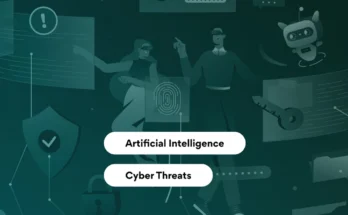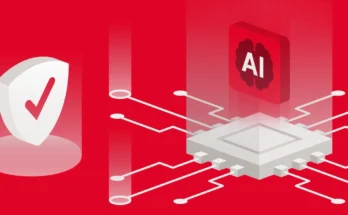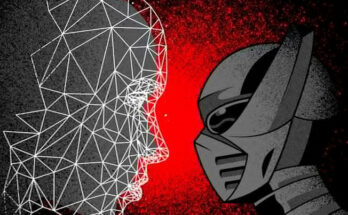Overview Real-Time Cyber Threat Hunting: Find and stop hackers before they strike.
Cyber attacks are becoming more dangerous day by day. Old security methods such as firewalls and antivirus software are no longer sufficient to protect businesses. Real-time cyber threats are a new way to find and stop hackers before they do damage. This approach is different because security teams don’t wait for alerts — they actively look for hackers hiding in computer systems.
Vulnerability uses specialized tools, knowledge of known hacker methods, and skilled security experts to detect attacks that normal security systems miss. This guide will explain what vulnerability hunting is, why it’s important, how it works, and what tools are used. We’ll also answer common questions about this security method.
What is Real-Time Cyber Threat Hunting?
Real-Time Cyber Threat Hunting is like digital spies constantly scanning a company’s computer systems for signs of hackers. These security experts look for unusual activity that could mean hackers have gained entry. Real-time means that this search happens continuously, not just once.
Regular security systems wait for something to trigger an alarm, such as when antivirus software finds a known virus. Vulnerability hunting is different because it looks for hackers who have found ways around these alarms. Poachers use their knowledge of how hackers work to find them even when they are sneaky.
Why Real-Time Cyber Threat Hunting Matters Now More Than Ever
Today’s hackers use very clever methods that often evade detection. Some systems can remain hidden for months without being noticed. Others use completely new attack methods that security systems don’t yet recognize. Some attacks don’t even leave behind files that an antivirus can scan. Sometimes the threat comes from within the company when employees abuse their access.
Vulnerability helps with all these problems by proactively looking for signs of hackers. It can detect attacks earlier, which means less damage is done. When threats are detected early, they can be stopped before critical data is stolen. This method also helps in finding security vulnerabilities before Real-Time Cyber Threat Hunting can exploit them.
How does Real-Time Cyber Threat Hunting work?
Vulnerability hunting starts with security experts making educated guesses about where hackers might be hiding. They look for reports of new hacker techniques and check their systems for anything unusual. They also study how other companies have been attacked.
Next, hackers collect information from different parts of the computer network. They look at activity logs from individual computers, check Internet traffic patterns, and review security system alerts. They also review the records of the cloud services that the company uses.
Hunters then scrutinize all of this information for signs of trouble. They look for things like hackers moving between different computers, people getting access they shouldn’t have, or large amounts of data being copied from systems.
When they find something suspicious, they act quickly to contain the threat. This may mean disconnecting infected computers, removing hacker tools, and closing security holes. After dealing with a threat, they record what they learned to help prevent similar attacks in the future.
Tools used in risk hunting
Security teams use several key tools to hunt down threats. Splunk helps analyze security logs to find unusual activity. Resilient Security is a free tool that monitors systems for problems. CrowdStrike Falcon specializes in detecting malicious activity on computers.
Microsoft Defender uses artificial intelligence to protect computers. The MITER ATT&CK framework is like an encyclopedia of hacker methods that helps hunters know what to look for. Wireshark examines Internet traffic, and YARA helps detect hidden malware.
Best practices for Real-Time Cyber Threat Hunting
Good vulnerability hunting starts with being aware of new hacker techniques. Many security companies publish regular updates about emerging threats that hunters should read.
Using automation for routine tasks saves time. Specialized software can handle the repetitive parts of the investigation, allowing human experts to focus on the difficult parts.
Training is essential for threat hunters. There are many cyber security courses available that teach the necessary skills. Good hunters never stop learning about new threats and detection methods.
Effective threat hunting requires checking all areas of a company’s technology, including cloud services and mobile devices. Hackers often target these areas because they can be less secure.
Sharing information with other security professionals is also important. Many industries have groups where companies share what they’ve learned about attacks, helping everyone improve their defenses.
Final thoughts for Real-Time Cyber Threat Hunting
Vulnerability to cyber threats has become essential for all businesses, not just large corporations. In today’s dangerous online environment, companies need to proactively seek out hackers instead of waiting for an attack to happen.
By combining smart tools, trained security personnel, and best practices, any organization can significantly improve its security. The key idea is simple: find threats before they find you. Being proactive about security is the best way to prevent malicious cyber attacks.
This approach to security requires an investment in tools and training, but the protection it provides is well worth the cost. Companies that use vulnerability hunting are much better prepared to deal with today’s most advanced cyber threats. The peace of mind that comes from knowing that experts are proactively protecting your systems is invaluable in our connected world.
Frequently Asked Questions: Real-Time Cyber Threat Hunting
- What is hacker hunting?
This is when computer security people actively look for bad guys hiding in company computers instead of waiting for the alarm to go off. - How is it different from normal antivirus?
Antivirus only catches known bad stuff – Hacker Hunt looks for new, sneaky attacks that miss normal protection. - Why do companies need it now?
Because today’s hackers are much smarter about old security – it makes them look for damage faster. - What do you need to become a hacker hunter?
You need to understand how computers talk to each other, spot strange behavior, and use special security tools. - Can small shops afford it?
Yes! There are affordable security services that do this for small businesses. - How often should you do this?
All the time is the best. Check everything carefully at least once a week. - What tools do they use?
They use things like Splunk (reads computer logs), Crowdstrike (detects malicious activity), and Wireshark (checks Internet traffic). - Do computers do all the work?
No – smart programs help, but people still need to make the final decisions. - How do you know if hackers are in?
Notice strange computer activity, people getting access they shouldn’t have, or data being copied in strange ways. - How does it protect information?
By finding hackers before they can steal anything important. - Is it too expensive?
It costs money, but much less than what a bad hack will cost your business. - Does it prevent all attacks?
Nothing stops everything, but it catches most problems early. - How long can hackers hide?
Without a victim, hackers can often stay hidden for 3-6 months! - Who needs it the most?
All businesses do, but banks, hospitals and governments are the most attacked. - Where can I learn more?
There are computer security classes and certifications you can earn.




